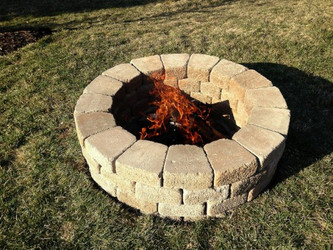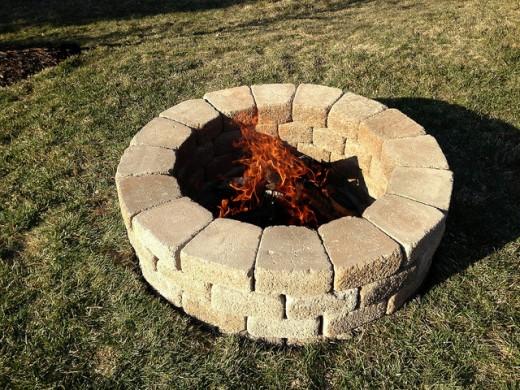Planning That Backyard Fire Pit Part 2
Posted by The Fire Pit Store on 11th Sep 2017
Do it Safe
By far the best and safest way to use cinder blocks, brick or stone for a more robust style of outdoor pit (and the way I personally recommend,) is to insulate the inner part of the structure with actual firebrick. It's pale white in color, perfectly safe, amazingly lightweight, and soft enough to be cut with a hacksaw to any form. Firebricks can usually be found in hardware stores or any place that sells fireplace or wood stove equipment. An ordinary brick or stone fire pit should be lined with something that can withstand extremely high temperatures. An alternative to lining your pit with firebrick is to use thick metal sheeting or a metal form, like the ones they use in campgrounds. I don't know where you would get these, however, but I don't suggest taking them from a campground.
There are a few other things to take into consideration relating directly to where you're going to put your fire pit once you've checked out the local ordinances, figured costs, and chosen your materials. Many manuals and online sources suggest keeping your fire pit at least 10 feet away from property lines and anything combustible like your fence, your neighbor's dog house, or nearby trees, but to my horror I've seen burning embers travel much farther on the gentlest of breezes. In addition, if you live in a windier location, is there an area of your property that could serve as a windbreak, and are you willing to construct something of that nature if there isn't?
Many fire pit plans call for measuring and excavating a shallow pit to be lined with sand or gravel before the laying of brick, which helps support the retaining wall that keeps the fire from accidentally spreading. Such plans also recommend an area surrounding the pit wall which is free of grass, sticks or leaves, anything that a flying ember could possibly ignite. This area can also be covered with an extra layer of sand or gravel for safety. With all this in mind, do you know the location of your home's water pipes, gas lines, and underground cables? Locating overhead tree limbs and power lines is easy enough, but if you have an underground sprinkler system, would you know how it's laid out? If you have doubts about any of these things, then it's probably smart to stay away from an in-ground style pit.
Since I live in a wooded area just on the outskirts of a small town and I'd probably have to do some driving to get anything really fancy, I know the final plan for my home-made fire pit is going to hinge pretty heavily on cost and availability of the materials I want, as well as on safety. In my next article I hope to bring you along on my journey as I execute my plans for my backyard fire pit



